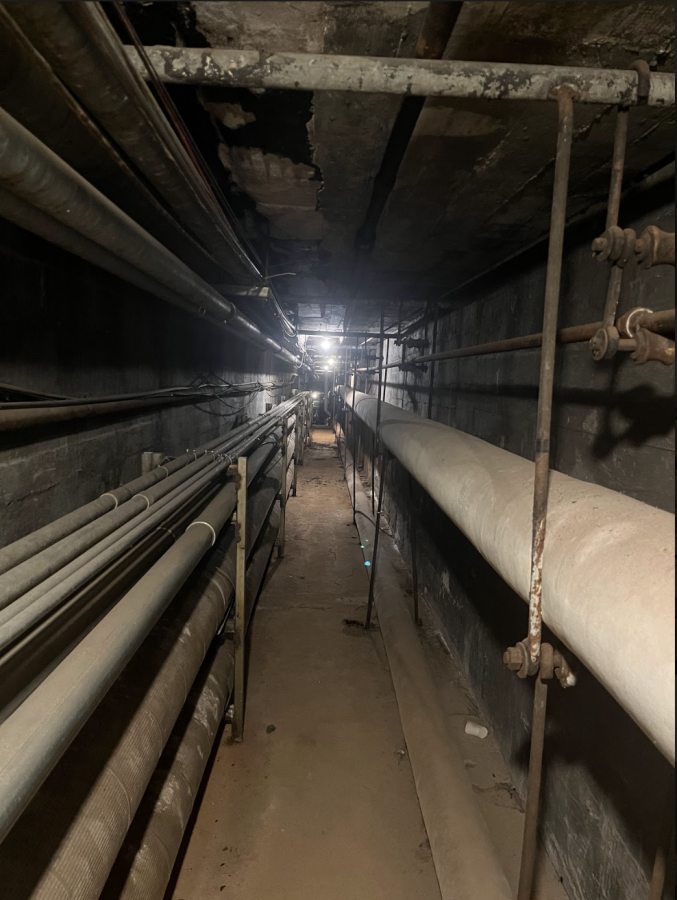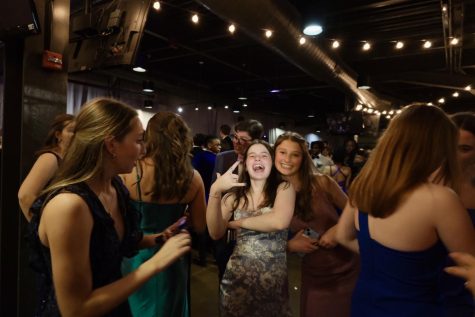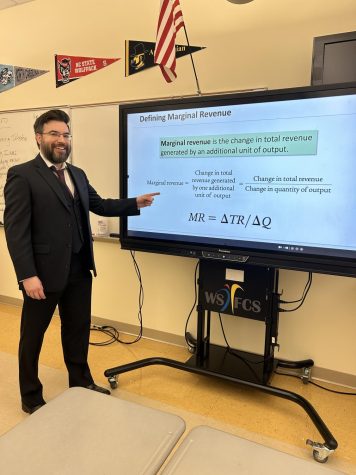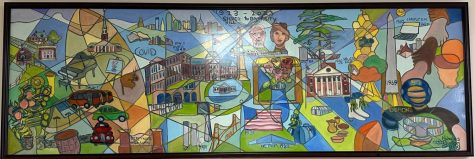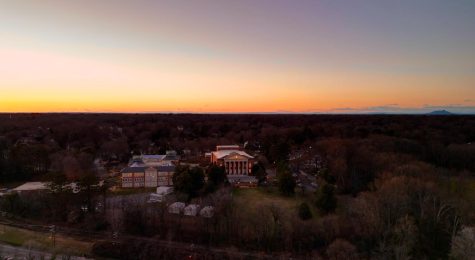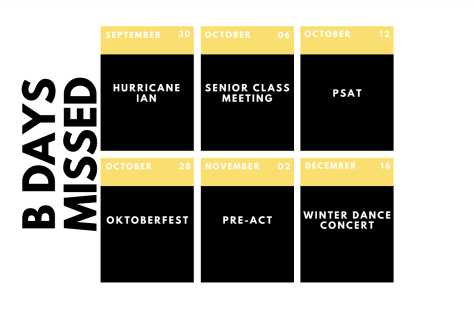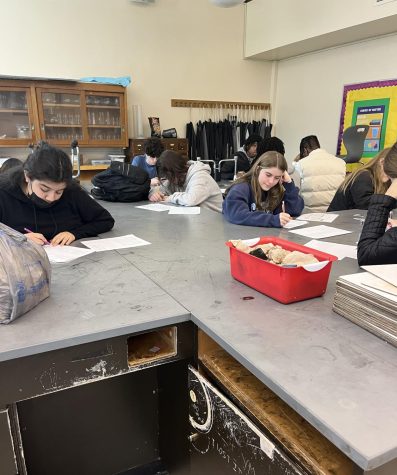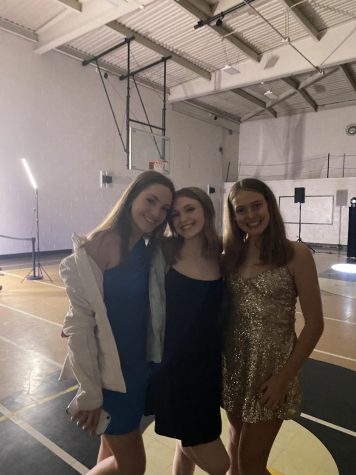100 years underground
Photo provided by Duncan Brown
The narrow tunnel slowly swallows you with the neighboring rusty pipes.
February 13, 2023
As you enter the front of the school and navigate your way to class wondering if it is an A or B day, your last thought is the vast system of tunnels that lay underneath our very feet. The tunnels which reside under the school are an intricate array of artifacts filled with numerous nooks and crannies that each have their own unique story to tell.
During my tunnel tour with Arts Magnet Director Pamela Kirkland, I was shocked by the amazing history I had been a part of every day without even knowing. Today, the tunnel’s primary use is to store our school’s HVAC and electrical units and provide safety during the occasional tornado warning.
Karen Morris, once a student and employee here at RJ Reynolds High School, was unaware of the tunnel’s existence. However, her mother, Carolyn Stokes, who also attended RJR and was in the graduating class of 1962, knew of their presence. Back then, most students knew about the tunnels but few were brave enough to venture down them.
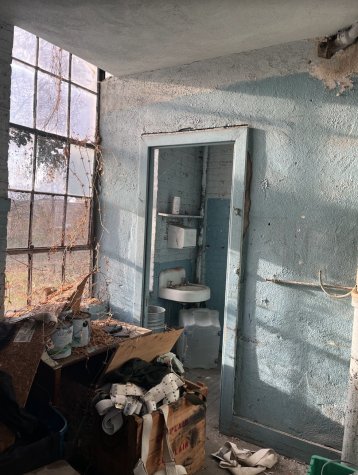
“If they went down the gate by room 106, they would get a ‘demerit,’” Stokes said.
However, when Morris began working at RJR, she only discovered them due to various tornado drills. However, in 2012, a legitimate tornado led staff and students to flee to the tunnels for protection from the impending storm.
“The school was in the tunnel for close to an hour,” Morris said. “The dismissal was delayed, parents were lined up outside the school to pick up students, and I went to cars and encouraged the parents to join us in the tunnels.”
The tunnels’ history may surprise many, as their uses were quite unique. The Richard J. Reynolds Memorial Auditorium: Vision and Triumph, pages 35-38, written by Ellen Kucher, describes its origins as such.
“A state-of-the-art heating and cooling system [was] designed by Wiley and Wilson of Lynchburg, Virginia,” Kucher said.
In the winter, hot air would travel through the tunnels and then filter into the hallways of the school. The intricate process was designed so the students that filled the hallways could do so comfortably even in Winston’s colder months.
“The cooling system used the same basic method of circulation but required that blocks of ice be placed in a trough in the basement and sprayed with a fine mist of water to cool the air as it passed over,” Morris said. “A fan forced the air along the shaft and directed the moist, cooled air beneath the auditorium floor and up through the vents.”
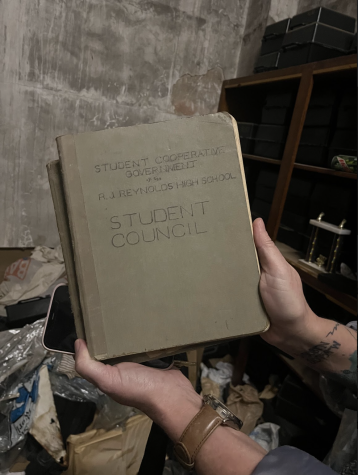
As I was squeezing through the tight tunnel entrances and dipping and ducking under overhead pipes, I noticed a light at the end. As Kirkland and I approached, we saw a sizable, well-lit room. Kirkland pointed out that this was the boiler room near the History Building. Large rusted metal contraptions lay asleep on either side of us.
“The tunnel underneath the main building runs from the boiler room building just past the History Building,” Assistant Principal David Friedman said. “The tunnel was where the heat from the boilers was carried to the main building.”
After further inspection, Kirkland and I traveled upstairs to the school’s old smoking room. This is where teachers used to come at midday and have a break from the hustle and bustle of the day. There was a bathroom and even a speaker for any announcements that may occur.
When returning to the entrance, we took a pit stop and entered the tunnel open to staff for direct transport. We entered through a door that led directly underneath the auditorium where the ice blocks were placed. You can still see the overhead vents that were used to distribute cold air throughout the auditorium.
While old and far from their prime, the tunnels are such a meaningful relic of the past: a cool bit of history that brings life to so many of our school’s urban legends. Getting to tour the tunnels I got to breathe in some of Katharine Reynold’s ghostly essence, and the hope she had for the school. They are just holes in the ground, but for 100 years’ worth of students, they are so much more.
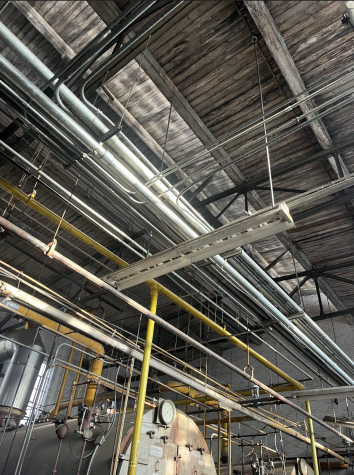
As we ventured back through the tunnels heading to room 106, passing the luminescent lights that hang above and the chalked-up graffiti from past students that scatter the walls, the reality of the history within our school set in. Suddenly, it’s 1923 again, and the ghosts of RJR’s past are all around.



